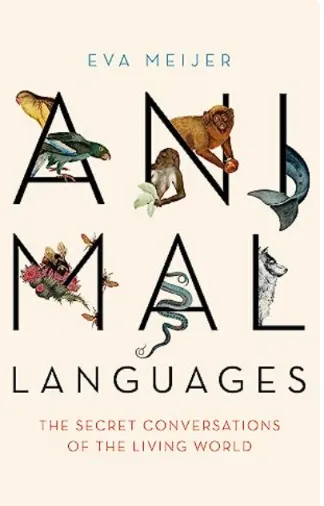Staff Pick: Animal Languages by Eva Meijer
Published on 29th April 2025
Eva Meijer has studied the work of behaviourists since this scientific branch began in the 17th century. In this book she concentrates on the question "Do animals have language?" It becomes clear that the answer depends on the definition of language, and this is obviously decided by humans and based on the understanding of human language.

Many researchers over the years have studied animals, both in the wild and in captivity, and how they communicate, and some remarkable discoveries have been made. One example concerns prairie dogs, who have developed an extensive range of alarm calls. They are able to describe a source of danger precisely: if the danger comes from above or from the ground, what colour it is, how fast it is approaching and what size it is.
They can change the order of the elements of the alarm calls, and they will have a different meaning, just as our language changes meaning with a different order of nouns, verbs and adjectives. Dolphins introduce themselves to one another with their name. They each have a different sound, which they use to call each other. And they are not the only animals who do this.

Birdsong is another example that shows how complex a non-human language can be. It is made up of components which have different sound patterns. The order of these components will define what the bird wants to express, similar to what prairie dogs do. Sentences uttered in this way are not finite. As with human language, there is space for development and change. Also, different bird communities of the same variety may communicate in a somewhat different way, just as can be observed in different human localities, where the same language is spoken, but some different words are used.
These are only a few examples, and Eva Meijer presents an extensive body of material to show us how similar humans and other animals are. She is a philosopher who teaches at the University of Amsterdam, and in this book she quotes other philosophers, both on the subjects of animals and language. She holds with Ludwig Wittgenstein who said that it is not possible to give a definition of language, as language is used in different ways and changes according to the situation. It is a broader concept as is generally thought.
As someone who has had animals all her life, I was interested in the book when I first saw it, and I have not been disappointed. There is so much we do not know about the other creatures we share this earth with and which we should be aware of. Understanding the other's language is followed by a better insight into who they are and the realisation that we are not that different.
"Animal Languages" is available to borrow from the libraries as a book.
Submitted by Walkinstown Staff